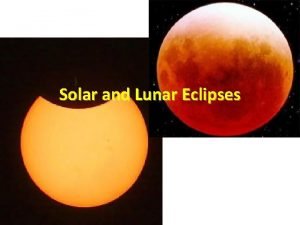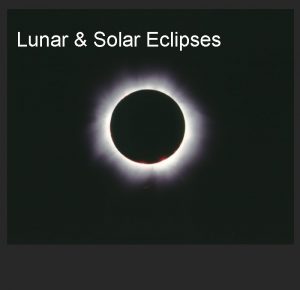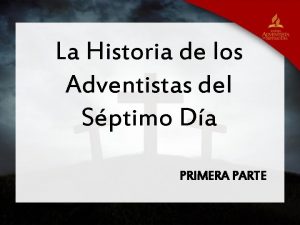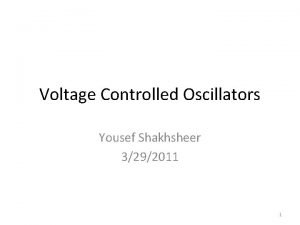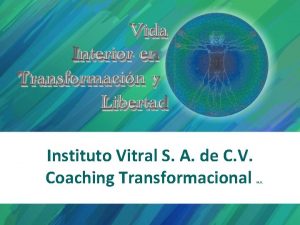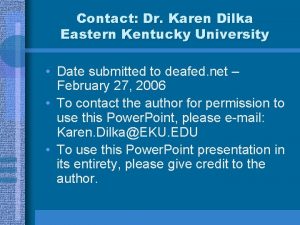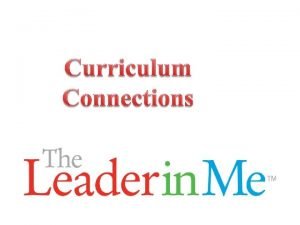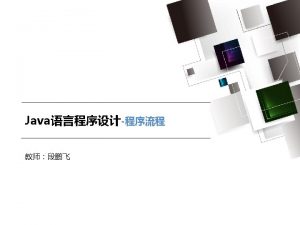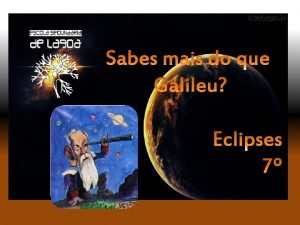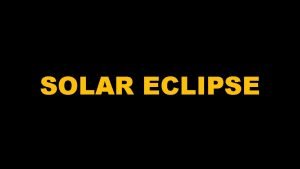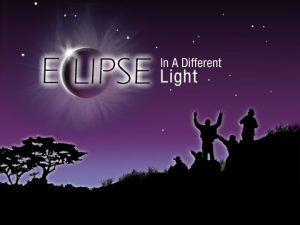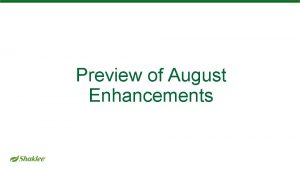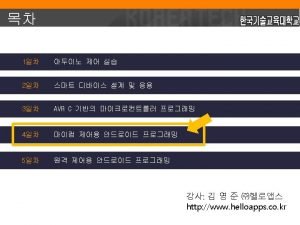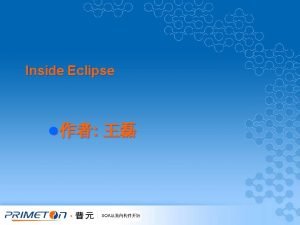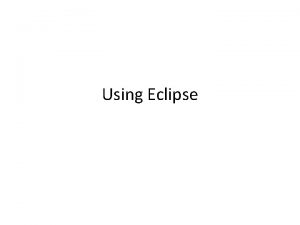Solar Eclipse Safety Jeff Fitch 81017 Eclipse August












- Slides: 12

Solar Eclipse Safety Jeff Fitch 8/10/17


Eclipse August 21, 2017 • The Eclipse will start ~11: 46 am; at maximum 1: 16 pm; end 2: 45 pm • Houston will see ~67 % level of Eclipse, not a total Eclipse. • Therefore it will not be safe to look at the sun during any portion of the eclipse unless you have eye protection.

How to View the 2017 Solar Eclipse Safely • Looking directly at the sun is unsafe except during the brief total phase of a solar eclipse (“totality”), when the moon entirely blocks the sun’s bright face, which will happen only within the narrow path of totality. • The only safe way to look directly at the uneclipsed or partially eclipsed sun is through specialpurpose solar filters, such as “eclipse glasses” or hand-held solar viewers. • Homemade filters or ordinary sunglasses, even very dark ones, are not safe for looking at the sun; they transmit thousands of times too much sunlight. Refer to the American Astronomical Society (AAS) Reputable Vendors of Solar Filters & Viewers page for a list of manufacturers and authorized dealers of eclipse glasses and handheld solar viewers verified to be compliant with the ISO 12312 -2 international safety standard for such products.

Do’s and Don’t Solar Eclipse Viewing • Always inspect your solar filter before use; if scratched or damaged, discard it. Read and follow any instructions printed on or packaged with the filter. • Always supervise children using solar filters. • Stand still and cover your eyes with your eclipse glasses or solar viewer before looking up at the bright sun. After looking at the sun, turn away and remove your filter — do not remove it while looking at the sun. • Do not look at the uneclipsed or partially eclipsed sun through an unfiltered camera, telescope, binoculars, or other optical device. • Similarly, do not look at the sun through a camera, a telescope, binoculars, or any other optical device while using your eclipse glasses or hand-held solar viewer — the concentrated solar rays will damage the filter and enter your eye(s), causing serious injury. • Note that solar filters must be attached to the front of any telescope, binoculars, camera lens, or other optics.

Do’s and Don’t Solar Eclipse Viewing • If you are within the path of totality, remove your solar filter only when the moon completely covers the sun’s bright face and it suddenly gets quite dark. Experience totality, then, as soon as the sun begins to reappear, replace your solar viewer to look at the remaining partial phases. • Outside the path of totality, you must always use a safe solar filter to view the sun directly. • If you normally wear eyeglasses, keep them on. Put your eclipse glasses on over them, or hold your handheld viewer in front of them.

Safe Methods to View the Solar Eclipse • Note: If your eclipse glasses or viewers are compliant with the ISO 12312 -2 safety standard, you may look at the uneclipsed or partially eclipsed Sun through them for as long as you wish. Furthermore, if the filters aren't scratched, punctured, or torn, you may reuse them indefinitely. • Some glasses/viewers are printed with warnings stating that you shouldn't look through them for more than 3 minutes at a time and that you should discard them if they are more than 3 years old. Such warnings are outdated and do not apply to eclipse viewers compliant with the ISO 12312 -2 standard adopted in 2015. To make sure you get (or got) your eclipse glasses/viewers from a supplier of ISO-compliant products, see the American Astronomical Society (AAS) Reputable Vendors of Solar Filters & Viewers (link is external) page. • An alternative method for safe viewing of the partially eclipsed sun is pinhole projection. (See next page) • Another idea, cross the outstretched, slightly open fingers of one hand over the outstretched, slightly open fingers of the other, creating a waffle pattern. With your back to the sun, look at your hands’ shadow on the ground. The little spaces between your fingers will project a grid of small images on the ground, showing the sun as a crescent during the partial phases of the eclipse.

Solar Eclipse Pin Hole Viewer • http: //hilaroad. com/camp/projects/eclipse_viewer. html

• If the bottom of the box isn't white, glue a white piece of paper to the bottom. This makes it easier to see the projected image. • Cut the ends off the box tabs as shown. This creates two openings, one for the foil the other for viewing.

• Tape aluminum foil over one of the openings. • With a small (~ 3 mm diameter) nail, push a hole through the foil. The size of the hole isn't critical, you can experiment with different sizes • Hold the finished pin-hole viewer with the sun shining on the pin-hole. The sun will be behind you. • Never look directly at the sun!

• While looking in the opening, move the box until an image of the sun appears on the bottom. • You are now safely viewing an image of the sun. • An eclipse would look like this through your pin-hole viewer.

Keep your Eye Sight Protected • “Listen to your Mama, no matter how much fun it might be. ” • Don’t Be Blinded By The Light. • The next Total Solar Eclipse is not until 2024. • Don’t miss this unique event. Sources used: American Astronomical Society (AAS) The Great Eclipse. com Eclipse 2017 NASA. gov
 Differentiate between lunar eclipse and solar eclipse
Differentiate between lunar eclipse and solar eclipse Lunar solar exo
Lunar solar exo Carlos fitch adventista
Carlos fitch adventista Fitch introduction to counseling download
Fitch introduction to counseling download Peter fitch clothing
Peter fitch clothing Profecia 2300 tardes y mañanas adventistas
Profecia 2300 tardes y mañanas adventistas Abercrombie and fitch competitors
Abercrombie and fitch competitors Oscillator phase noise 50low
Oscillator phase noise 50low Rosa isela gluyas fitch
Rosa isela gluyas fitch Mason fitch cogswell
Mason fitch cogswell Wendy fitch
Wendy fitch August safety topics
August safety topics August safety
August safety
